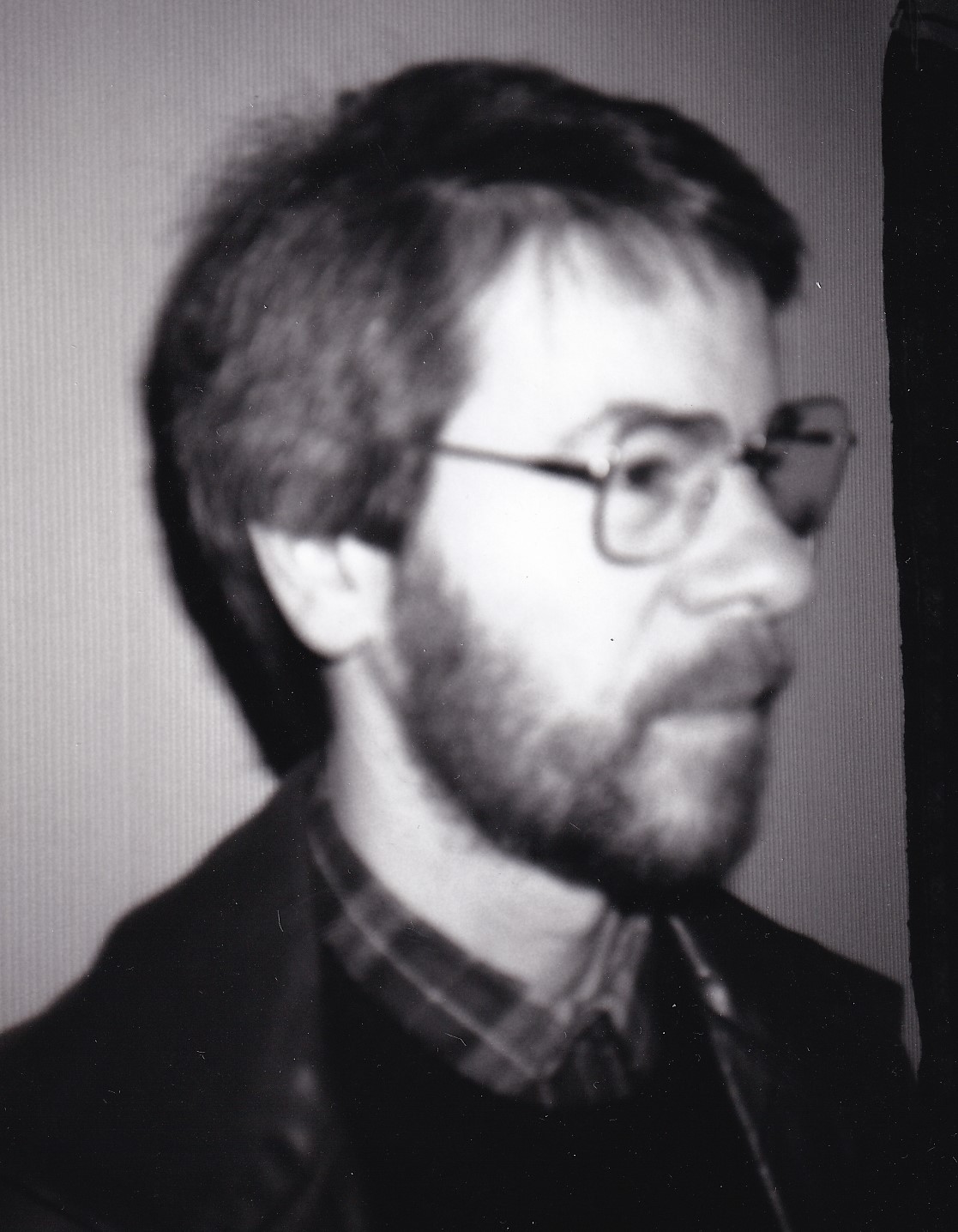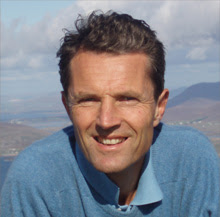 David Lorimer
David LorimerNew Renaissance
David Lorimer edited A New Renaissance (published 2011), a book widely celebrated in the new age. Science and society would be transformed by the SMN heroes (even “Spirit” would be changed by their genius). The contributors included stock names in the “science and spirituality” front, such as Ervin Laszlo, the Grof supporter Richard Tarnas, Larry Dossey, Rupert Sheldrake, and Peter Russell. The Prince of Wales was also represented in this SMN volume. His royal entry was entitled “Restoring Harmony and Connection: Inner and Outer.”
An underdog wrote to the Office of the Prince of Wales concerning a relevant matter. My late mother (Jean Shepherd, or Kate Thomas) did not receive a suitable reply from royal aides. She had formerly thought highly of the Prince, believing that he would not ignore a discrepancy. Now came the reluctant admission: “I was wrong. He is unreliable, like the new age superstars.” Her friction with David Lorimer resulted in her total disillusionment with the “progressive” scene of “science and spirituality,” from which she completely withdrew in her last years.
The Prince of Wales had been sent data relating to SMN drawbacks. The data was disregarded. In 2011, Prince Charles supported the SMN, annulling any complaint of conscience. In 2011, A New Renaissance was advertised as an SMN production, being edited by two SMN members, with some other SMN members amongst the article contributors. The auspices are beyond dispute. The Prince of Wales effectively endorsed the SMN via his inclusion in the book at issue, thus proving compatible with Christopher Bache, and also the psychedelic exponent Richard Tarnas, a fellow contributor to the SMN manual.
Jean Shepherd had complained at the pro-LSD attitude of David Lorimer. The relevant episodes are documented (Shepherd 2005:405-410; Bache and the SMN website, 2007). The SMN website displayed a pro-LSD article, by a prominent American LSD enthusiast, for several years until 2010. LSD usage in Britain had formerly decreased. However, from 2013, an increase occurred; a resort to MDMA and LSD spread amongst young people in the age group 16-24. MDMA was in the ascendant. The reason for the resurgence of LSD popularity remained officially obscure. “Fashion” is not a sufficient explanation.
In 2016, one commentator wrote: “Over the last few years the number of young people in Britain who are trying out acid [LSD] has skyrocketed” (Young People in Britain taking more LSD). This was the highest number in fifteen years. One of the reasons may be urged in terms of advocacy from academic LSD supporters like Christopher Bache, strongly favoured by David Lorimer. Bache is not commended by medical experts, who adopt a very different assessment of psychedelic factors.
Medical experts were alarmed to learn that a small percentage of British schoolchildren had resorted to LSD. At first, this was only about one in a hundred, between the ages of 11 and 15. However, that psychedelic usage increased during COVID lockdowns to one in five young people who microdosed.
Meanwhile, complaints and ethical factors meant nothing to the SMN or to royalty. Management errors in “alternative” organisations are condoned. Objectors to drug use can be ignored and squashed. The SMN maintained public access for six years (2004-2010), at their website, to an influential American pro-LSD article of Grof disciple Christopher Bache. My mother’s disputing anti-LSD article was not permitted on this media, the SMN online promotion being completely one-sided. Psychedelic perinatal fantasy and LSD high dosage are no recommendation for David Lorimer’s SMN “new world values,” which encompass cordon and ideological suppression.
Drugs are fashionable in a decadent society. Cocaine is the predominant middle class drug indulgence in England. In general, the number of deaths from drug use has increased across the UK. During 2019-20, an estimated one in eleven adults, in the age group 16-59, took recourse to a drug in England and Wales, many of these people needing medical treatment. Some medical experts say that my mother was correct to warn against LSD endorsement, especially when this occurred under the auspices of “scientific and medical.” Christopher Bache represents LSD high dosage of 300-500 micrograms. Again, new world values can be faulted.
The accumulating English complacency about “recreational” drug use is contradicted by the pervasive vogue for cocaine, which fuels an international criminal activity. By 2018, Britain suffered the highest number of young cocaine users in Europe. The death toll is no proof of health. Cocaine users, like LSD users, can jump from balconies to their death. Hospital admissions for mental health disorders increased. In England, films and television features have glamourised drug use, helping to make cocaine acceptable. The high demand for this drug has attracted overseas drug dealers, who came to view Britain as a very desirable market. Scotland has suffered more drug deaths than England, with many of these being in the 35-54 age bracket (reports refer to poly-drug use, including cocaine and heroin). Recreational drugs are a hazard, condoned by ignorance of consequences.
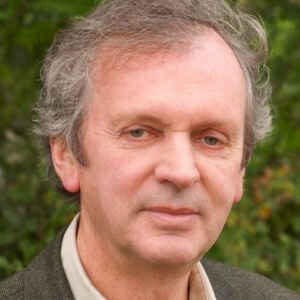
Rupert Sheldrake
Another celebrity name in A New Renaissance (2011) is English biochemist Dr. Rupert Sheldrake, who has gained substantial fame as a critic of conventional science. “I want the sciences to be less dogmatic and more scientific” (Sheldrake 2012:7). Sheldrake’s book The Science Delusion gained both supporters and detractors. Others were more neutral, awaiting scientific or philosophical arguments to convince. One critic reacted to the Sheldrake opus in terms of: “disturbingly eccentric; fluently superficial, it combines a disorderly collage of scientific fact and opinion with an intrusive yet disjunctive metaphysical programme” (John Greenbank, The Science Delusion).
Several years later, the nature of “new spirituality” became evident in the “more scientific” agenda of Sheldrake. His book Ways To Go Beyond has a chapter highlighting the use of drugs and psychedelics, in a manner that is clearly approving and indulgent. He tells his reader that cannabis “can facilitate spiritual experiences.” Sheldrake describes psychedelics in terms of “visionary experience.” He says encouragingly: “At least as many people are taking psychedelics today as in the 1960s” (Sheldrake 2019, chap. 4). Psychedelics are here conflated with “spiritual openings,” in the deceptive manner of the American drugs lobby.
Sheldrake discloses that he first took MDMA in California during the early 1980s. Critics are not disposed to admire his feat of distraction. MDMA (Ecstasy) is a psychoactive drug, frequently used as a stimulant. The condoning approach of Sheldrake reveals the acute poverty of new spirituality, a form of buzz talk reflecting popular trends. The dogmatic “Californian” paradigm should not be internationally imposed. Pseudoscientists who encourage drug usage are a primary hazard, perhaps far worse than the materialism they lament. Psychedelic (and stimulant) pills are very material chemical creations of profiteers. In 2021, MDMA pills found at a nightclub in Manchester were four or five times the usual strength, and capable of causing deaths.
The LSD lore of cosmic spirituality in a pill is a banal deceit. Some big talkers are known to derive psychobabble from their drug experiences. Serious medical problems, not merely panic attacks, are caused by numerous drug complications. The man and woman in the street have to survive the hazards created by academic drug enthusiasts and psychedelic superstars like Timothy Leary, Richard Alpert, Stanislav Grof, and Christopher Bache. Psychedelic advocates are not spiritually enlightened, as they often claim or suggest. They are instead deluded by hallucinations and Jungian archetypal lore which has saturated society.
The hallucinogen LSD is often described as non-addictive; however, a form of addiction to “trips” can occur. “LSD is considered psychologically addictive” (LSD abuse treatment). A psychological dependence on LSD and other psychedelics is not healthy, though nevertheless typical of drugs lobby activity. There are “documented cases of prolonged intense [LSD] use causing negative side effects such as paranoia or psychosis” (LSD addiction). LSD can also cause the affliction known as HPPD (hallucinogen persisting perception disorder). This problem can cause acute visual disturbance undermining the ability to function normally; the very undesirable syndrome is potentially permanent. “LSD use may lead to temporary or long-term mental disorders” (Hallucinogens).
In California, drug yobs opted to spike drinks with LSD, MDMA, and Ketamine (plus other commodities). The vogue for spiking has become international, a symptom of the social malaise caused by recreational drug use. Spiking now often occurs with the intention of robbery or sexual assault, even kidnapping. Spiking can result in hospitalisation or even death. The “date rape drug” society spells disaster.
The American commercial craze for psychedelic therapy wants to invade psychiatry, which is stated to be ineffective by critics. Greedy investors are throwing millions of dollars into MDMA and psilocybin, ensuring that confusion will continue. The Grof supporter Rick Doblin, another psychedelic superstar, has accumulated over forty million dollars (via MAPS), a sum that could be better spent elsewhere than on the legalisation of psychedelics, which is the underlying objective of “psychedelic therapy.” America is governed by the Wall Street mentality, which will invest in almost anything unhealthy, such as the gun lobby, the fossil fuel industry, the plastics pollution. In dead end society, high status academics afflict and mislead the man in the street with psychedelic claims of “cosmic consciousness” and “spiritual rebirth.” Anything but due education, a factor obfuscated by markets like SUNY (State University of New York) Press.
SUNY advertised a book by Christopher Bache in terms of: “Bache argues that when the deep psyche is hyper-stimulated using Stanislav Grof’s powerful therapeutic methods, the healing that results sometimes extends beyond the individual to the collective unconscious of humanity.” This statement comes from the cover of Dark Night, Early Dawn (2000). The fantasies are never-ending.
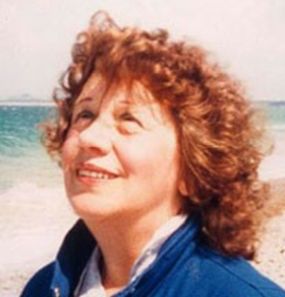
Jean Shepherd at Findhorn
Jean Shepherd (d.2017) had the misfortune to join the SMN, at first believing this to be a credible project of “scientific and medical” relevance. She found an almost complete ignorance of basic medical facts relating to drugs. Her objection to Grof doctrine resulted in the dubious SMN preference for online cordon against her complaint. Dr. Christopher Bache alone sufficed for representation, championing the Grof cause of LSD neoshamanism, abetted by Lorimer at the expense of all other factors. The marginalised objector resigned from the SMN in disgust at the pro-Grof policy of David Lorimer. She also declined to enroll in the SMN video circuit of persona and prestige, which effectively outweighed ethical priorities.
The senior female dissident, screened from the “scientific” SMN website, had vivid memories of the 1990s Findhorn Foundation, a close affiliate of the SMN. Jean Shepherd related how Dr. Stanislav Grof would not respond to her letter of complaint when both of them were in the Findhorn vicinity during the early 1990s. The commercial elite must not be criticised, even when these entrepreneurs charged £415 for hyperventilation (holotropic breathwork) sessions causing acute stress and shock symptoms in many women. Only the fee counts, not the aftermath of discomfort which can last for weeks and months.
The founder of Grof Transpersonal Training Inc. was notorious for dosing clients at Esalen with MDMA (LSD was also implicated). The psychedelic hierophant Stanislav Grof is a neo-Jungian archetype of deceptive self-discovery. Drug dosage in “therapy” was a means of controlling and hypnotising clients. Such projects thrive in the complete absence of critical ability.
Psychedelic hallucination was the ultimate reality for deceived and deluded clients who became converted to the drugs lobby. This scenario had economic dividends for the new age impresario David Lorimer. More audience for seminars, more subscriptions, more American donors. The Prince of Wales was a high status feature in New Renaissance publicity of 2011.
At the Findhorn Foundation, Jean Shepherd heard many declarations of environmental commitment. Unlike the confusing new age jet set, she had never been on an aeroplane. Moreover, she had never driven or owned a motor vehicle. In contrast, the giant carbon footprint of the Findhorn Foundation, SMN, and British Royalty is no remedy for climate change. Some urge that the psychedelic footprint of the SMN (and American affiliates) is more hazardous than the ecological factor.

Christopher Bache
Dr. Christopher Bache is a role model for the drugs lobby, in terms of 73 high dose LSD sessions he privately conducted over a twenty year period from 1979 to 1999. This project is reported in his own words (Bache 2019). He was strongly influenced by Dr. Grof in this personal venture, having read the misleading 1970s Grof book Realms of the Human Unconscious. Bache has claimed a self-transformation as a consequence of psychedelic experiences.
Jean Shepherd never ingested LSD, advocating independent mysticism as a safeguard. Her critique (though appearing in the SMN journal) was afterwards relegated by Lorimer, a noted fan of Bache. Lorimer has described Dr. Bache as an “intrepid psychonaut,” while referring to his LSD testimony as a “stunning revelation.” To an independent citizen, the partisan academic and SMN support for psychedelic experience is open to strong criticism. The chronic danger for Bache imitators should be cognised. A Bache high dose means 300-500 micrograms of LSD. Some medics wince at these excessive figures. Even the more diluted “full dose” of 100-200 mcg is considered very strong by clinical experts, indeed too strong to mitigate certain well known problems discernible. Even an LSD microdose of 20 mcg can trigger abnormal symptoms.
The reckless Bache was restrained by comparison with his inspirer. The psychedelic hero Stanislav Grof “took high doses of LSD – ranging from 300 to 1,200 micrograms – more than a hundred times, and supervised more than four thousand LSD sessions involving others” (Horgan 2003:163). Grof tried to convince journalist John Horgan that Hindu gurus, especially the controversial and promiscuous Swami Muktananda (d.1982), have psychic powers (siddhis). Horgan writes: “I now saw that he [Grof] was a hard core believer, a sheep” (ibid:166).
Grof was not a detached clinical observer. Instead, he innovated transpersonal psychology, a trend obsessed with therapeutic potential and the achievement of “transpersonal states.” Grof established an international “workshop” business to cater for the demand he created. The neo-Jungian “archetypal” talk was remunerative for Grof Transpersonal Training Inc. Dr. Grof flourished in a gullible milieu where many LSD experimenters believed they had gained paranormal powers such as telepathy. One of the major casualties of that era was retarded ex-Professor Richard Alpert, who opted for 2,400 micrograms of LSD daily at one period of his very confused existence. The overall damage caused Alpert (Baba Ram Dass) to believe he was a “spiritual teacher.” That dumbo phrase has no meaning. There were numerous psychedelic “spiritual teachers” seeking limelight in America during the 1970s and later.
The commercial Grof theme of “death and rebirth” was endorsed by the SMN at an influential Cambridge seminar in 1995. The seminar was named Beyond the Brain, this being the title of a book by Grof. The exotic neo-Jungian perinatal mythology was treated as fact by victims of drug dosage and hyperventilation. They were “reborn” as client initiates of Grof Transpersonal Training Inc. The reckless Cambridge seminar, arranged and led by Lorimer in university precincts, created a wave of Grof archetypal speak amongst affluent English middle class subscribers to the confusing new age. These fans were now helplessly confused victims of LSD lore as mediated by Grof. The brain was effectively obscured by putative archetypes.
The beliefs of Lorimer were influential in Britain, assisting the Ken Wilber craze and the American drugs lobby. At one period, Lorimer was blind to deceptions of neo-Advaita guru Andrew Cohen, though afterwards admitting that he had made a mistake.
Fans of Ken Wilber slavishly copied his eccentric colour code doctrine. This was not a psychedelic regimen, but nevertheless disconcerting. The American “integralist” Wilber particularly disliked green, meaning ecologists who lacked the transcendent spiritual heights which he claimed for himself. He was a turquoise enlightened integralist of epochal stature. The Dalai Lama was a midget by comparison, Wilber implied. Videos of Wilber integral discourse preached such altitude as “You are Big Mind.” There are still many confused victims of the Google video boom. Wilber regarded the exploitive guru Andrew Cohen as a facilitating authority for his own spiritual genius and integral vision. One of the punishments Cohen devised for dissidents was to have paint poured over the head in a gesture of contempt.
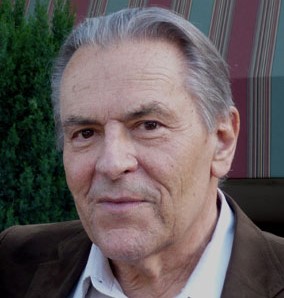
Stanislav Grof
Beyond the Brain transpired to be a long-term SMN seminar investment, completely ignoring sidelined issues. Dr. Grof was still appearing as an SMN-hosted speaker in 2018. His celebrity was revered, his victims consigned to oblivion. The SMN here glowingly advertised Grof as “a psychiatrist with more than sixty years of experience in research of non-ordinary states of consciousness.” No mention is made of relevant criticism. The victims of “non-ordinary states” included the experimenter’s own wife and many terminally ill patients whom he subjected to LSD terrors in the guise of “transformation.”
Grof describes how his patients, dosed with LSD, “spent hours in agonising pain, gasping for breath with the colour of their faces changing from dead pale to dark purple. They were rolling on the floor and discharging extreme tensions in muscular tremors, twitches and complex twisting movements…. there was often nausea with occasional vomiting and excessive sweating”…. Transpersonal torture was Grof’s obsession…. At Spring Grove Hospital [in Baltimore] a total of one hundred patients were pressed into the LSD torture programme which Grof called “research,” though criminal license is probably a more scientific description…. Grof was enthusiastic about his patients having “vivid destructive and self-destructive experiences” which “involve bestial murders, tortures of all kinds, mutilations, executions, rapes, and bloody sacrifices.” These LSD experiences were interpreted by the Jungmaniac as life/death struggles on the way to spiritual peace. Grof should have been certified as a public menace, but was instead endorsed and glorified by both Esalen and SUNY [State University of New York Press]…. Grof’s wife was another casualty. Joan Halifax “had a major nervous breakdown due to LSD usage” while still married to Grof. Stories about safe dosages should be ignored, or rather castigated. (Shepherd 2005:13-14)
In New Renaissance medicine, LSD application may become compulsory at the command of transpersonal abusers. Hospitals might become playgrounds for psychedelic therapists keen to prove how much torture any one patient can endure before transformation at death, resulting in spiritual peace. Non-ordinary states of consciousness include agonies so intense that the afflicting subject would be deleted from any sober curriculum. “Beyond the brain” sadism is a shocking scenario.
In another direction, the Findhorn Foundation were primary subscribers to SMN agenda. An early instance of dysfunction at this location was child abuse; the strongly alleged culprit was an American practitioner of NeoReichian therapy. The Foundation management denied any problem; the “allegation” was suppressed (Castro 1996:53-54; Shepherd 2005:182). However, other persons were aware of what really happened. My mother was on the spot and heard details from those who feared the Foundation bullies. David Lorimer subsequently ignored the bullies in various reported situations, turning a blind eye to all discrepancies. Subscriptions were the priority; ethical concerns were adroitly disqualified as a nuisance.
The Findhorn Foundation management were empowered by the condoning BBC publicity, and the mercenary SMN. However, they gained the reputation of tyrants amongst those more familiar with events. In the New Renaissance, “science and medicine” can be confused with auspices of “love myself,” “transformation,” “planetary healing,” and related contrivances of the commercial elite. Suicides of Findhorn Foundation subscribers might too easily be explained away as “transformational death.” Acute psychological problems, of hospitalised victims, could be sanitised in bully lore as a healing process for the purpose of “being already who you really are.” Another key phrase of casualty is “celebrate your individuality.”
The Findhorn Foundation was founded by Eileen Caddy (d.2006), whose behaviour caused disappointment, despite her claim “God Spoke to Me.” The ecovillage ideal amounts to an “eco-house” selling for £300,000. Ecobiz is justified by exaggerated therapy jargon. In more general new age terms, child abuse could too easily be explained away by archetypal theories of transpersonal dionysian energies amounting to Who You Really Are. Paedophiles might even be knighted by the New Renaissance, in the absence of any due agency to check upon dysfunction within charity status organisations. Critical assessors will merely be dismissed as “judgmental,” of no relevance to funding, status credentials, and misinformation.
Bache, Christopher, Dark Night, Early Dawn (State University of New York Press, 2000).
Kevin R. D. Shepherd
ENTRY no. 53
Copyright © 2021 Kevin R. D. Shepherd. All Rights Reserved

